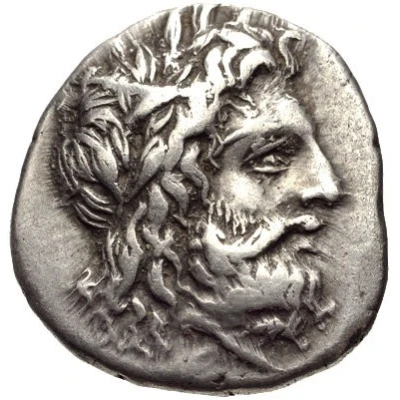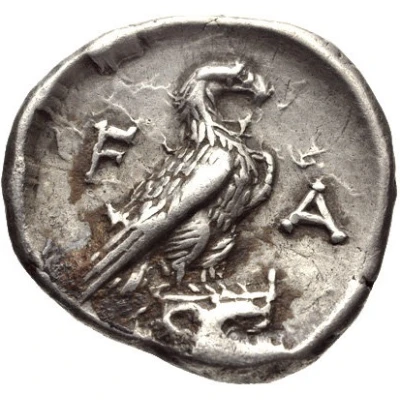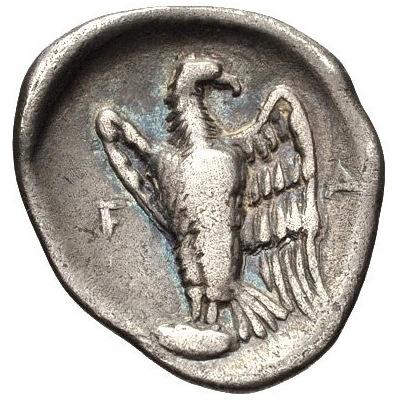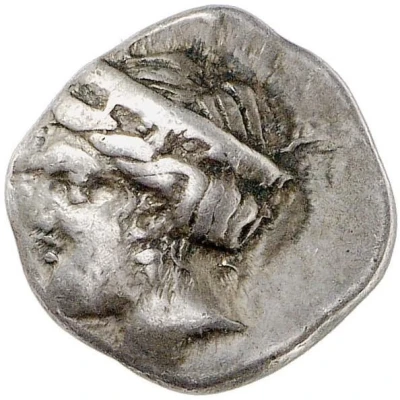
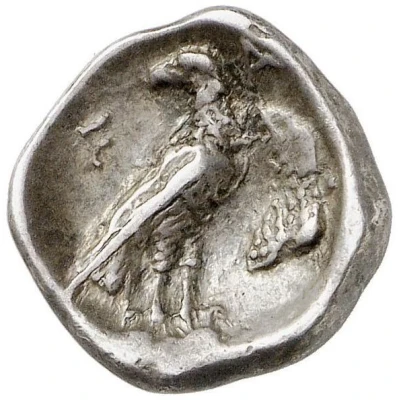

© Fritz Rudolf Künker GmbH & Co. KG, Osnabrück and Lübke & Wiedemann KG, Leonberg
Hemidrachm - 109th-110th Olympiad 344 BC - 340 BC
| Silver | 2.43 g | 16.0 mm |
| Issuer | Olympia (Elis) |
|---|---|
| Type | Standard circulation coin |
| Years | 344 BC - 340 BC |
| Value | Hemidrachm (½) |
| Currency | Drachm |
| Composition | Silver |
| Weight | 2.43 g |
| Diameter | 16.0 mm |
| Shape | Round (irregular) |
| Technique | Hammered |
| Orientation | Variable alignment ↺ |
| Demonetized | Yes |
| Updated | 2024-10-09 |
| Numista | N#177900 |
|---|---|
| Rarity index | 100% |
Reverse
Eagle standing right, head left, wings folded. To right, cut pomegranate
Script: Greek
Comment
Seltman, Temple, pl. XII, 19.
Interesting fact
The Hemidrachm coin from Olympia (Elis) was used as a form of currency during the 109th-110th Olympiad (344 BC - 340 BC) and features an image of Zeus on one side and a depiction of an olive tree on the other. The coin was made of silver and weighed 2.43 grams. What's interesting is that the coin was used as a form of payment for athletes who participated in the ancient Olympic Games, which were held in Olympia, Greece. This coin serves as a tangible reminder of the rich history and cultural significance of the Olympic Games, which have been a symbol of athleticism, competition, and international unity for thousands of years.
